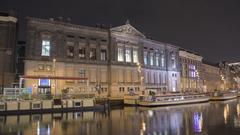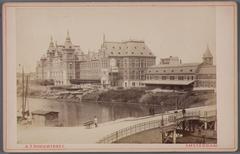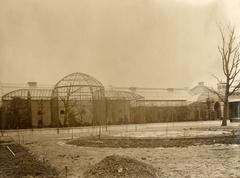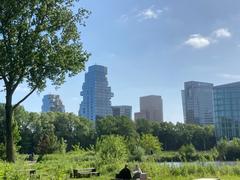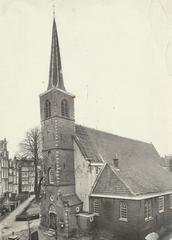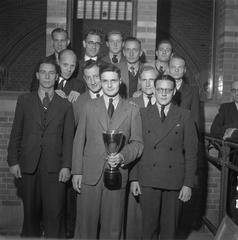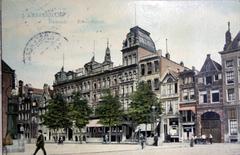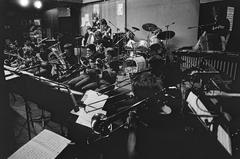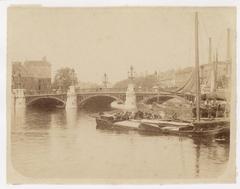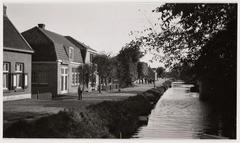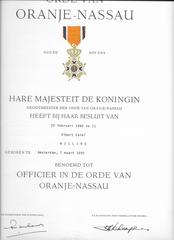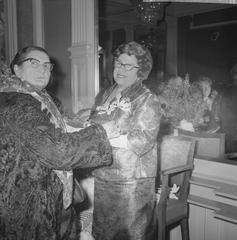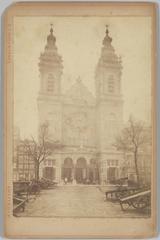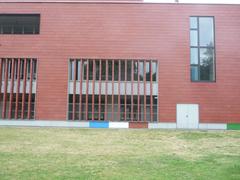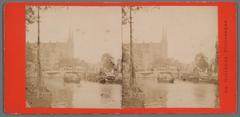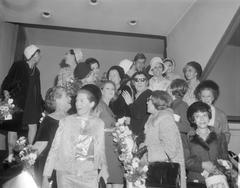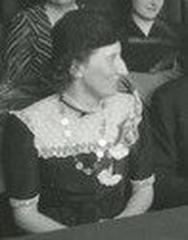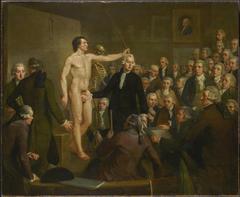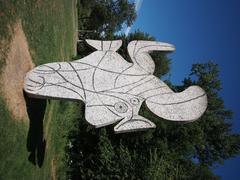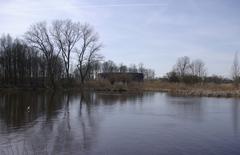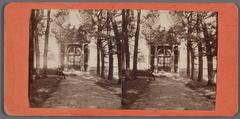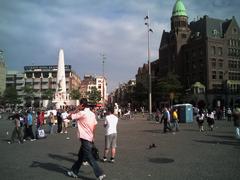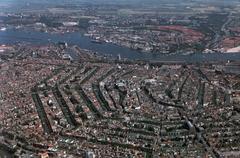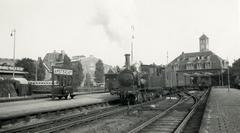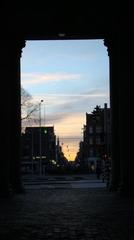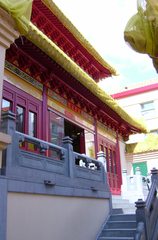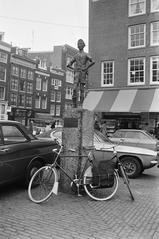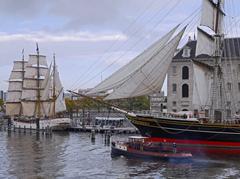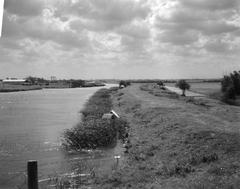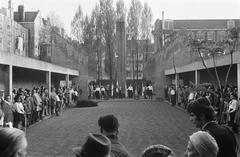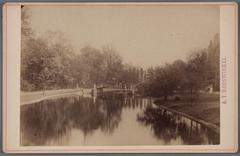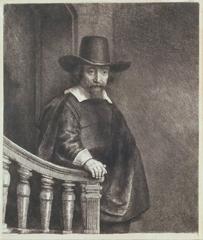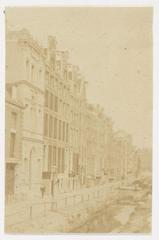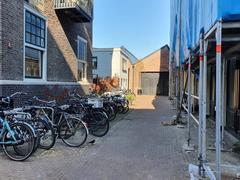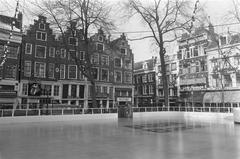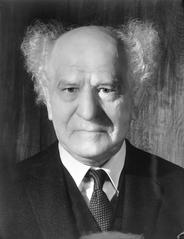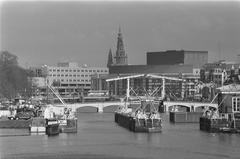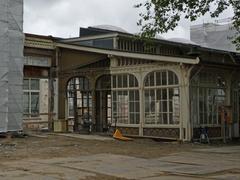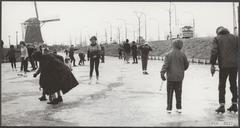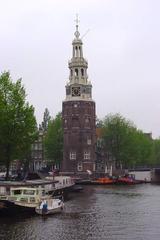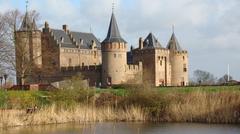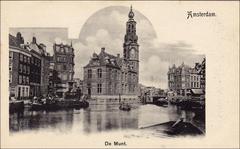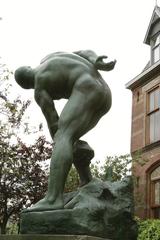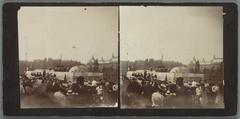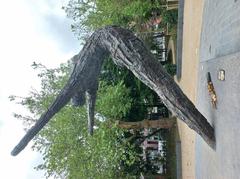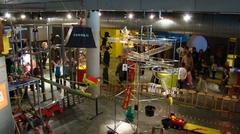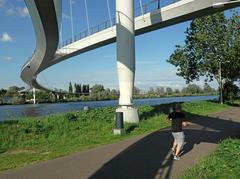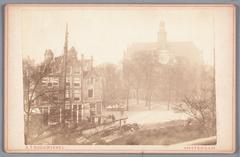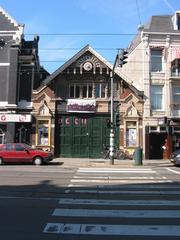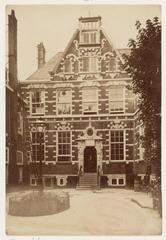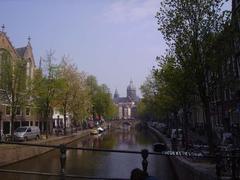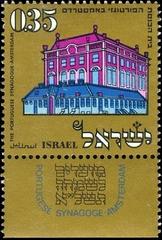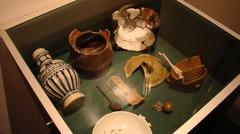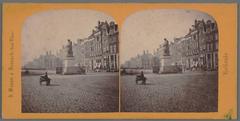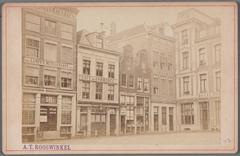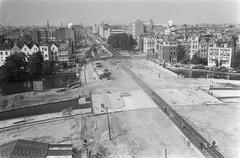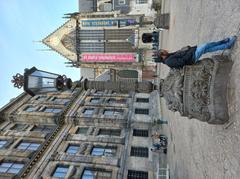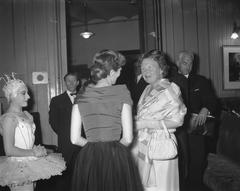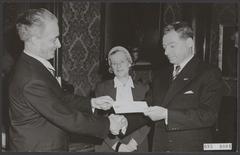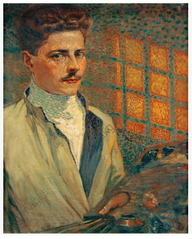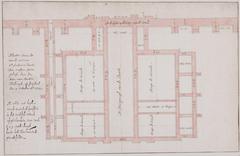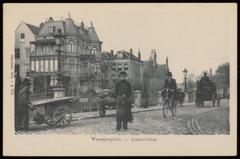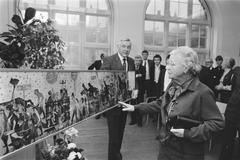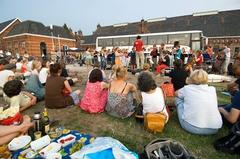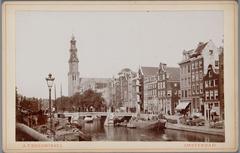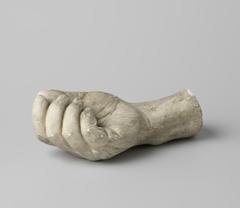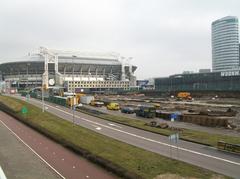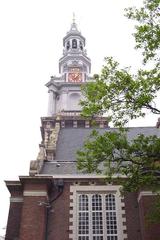
Warmoesstraat Amsterdam: Visiting Hours, Tickets, and Historical Sites Guide
Date: 03/07/2025
Introduction
Warmoesstraat stands as one of Amsterdam’s most historic and culturally significant streets, seamlessly blending centuries-old heritage with contemporary urban vibrancy. As Amsterdam’s oldest street, its origins stretch back to the late 13th century, offering visitors a unique lens into the city’s medieval roots, commercial evolution, and diverse social fabric (Lonely Planet; Amsterdam Red Light District Tour). The street derives its name from an old leafy vegetable, reflecting its early role as a supplier of fresh produce to the growing metropolis.
Today, Warmoesstraat is a microcosm of Amsterdam: a place where medieval architecture, LGBTQ+ heritage, vibrant nightlife, and multicultural commerce converge. Its proximity to landmarks like Oude Kerk and hidden churches such as Ons’ Lieve Heer op Solder, along with its legacy as a commercial artery and LGBTQ+ hub, make it essential for anyone seeking to experience the true spirit of Amsterdam.
This comprehensive guide details Warmoesstraat’s history, practical visitor information, and insider tips—ensuring you get the most from your exploration of this iconic street.
Table of Contents
- Medieval Origins and Early Development
- Architectural Heritage and Amsterdam’s Oldest House
- Religious and Social Significance
- Commercial and Urban Evolution
- The Red Light District and Modern Identity
- Visiting Warmoesstraat: Practical Information
- Nearby Attractions
- Law Enforcement and Social Change
- LGBTQ+ Heritage and Nightlife
- Jewish and Multicultural Footprints
- Artistic and Cultural Venues
- Food, Drink, and Shopping
- Events and Festivals
- Hidden Gems and Alternative Experiences
- Practical Travel Tips
- Frequently Asked Questions (FAQ)
- Conclusion
- References
Medieval Origins and Early Development
Warmoesstraat’s history dates to the late 13th and 14th centuries, making it Amsterdam’s oldest street. Its name, “Warmoes,” comes from the trade in leafy vegetables, as the street once supplied fresh produce to the medieval city (Amsterdam Red Light District Tour). Built as one of the first main roads from the IJ river towards Dam Square, it was crucial to Amsterdam’s early urban layout (Lonely Planet).
During the Middle Ages, Warmoesstraat became a key link from the city gate, Olofspoort, to Dam Square, welcoming merchants, pilgrims, and local traders to what would become Amsterdam’s bustling heart.
Architectural Heritage and Amsterdam’s Oldest House
One of the most remarkable landmarks is Amsterdam’s oldest house at Warmoesstraat 90. While its 19th-century façade conceals its true age, the building’s wooden beams date back to 1485 (DutchAmsterdam). Today, this building houses The Eagle Amsterdam, the city’s oldest gay bar, symbolizing the street’s ongoing cultural diversity. Although not officially a national monument due to its modern exterior, the site is a tangible link to Amsterdam’s medieval past.
Religious and Social Significance
Warmoesstraat is situated near the Oude Kerk (Old Church), Amsterdam’s oldest building (dating from 1306), which served as the city’s spiritual and social center (Lonely Planet). The Reformation forced Catholic worship underground, leading to the creation of clandestine churches like Ons’ Lieve Heer op Solder—a striking example of religious resilience and ingenuity (Conscious Travel Guide).
Commercial and Urban Evolution
From the 16th to 18th centuries, Warmoesstraat thrived as a commercial hub, lined with shops, warehouses, and inns serving merchants and travelers. Its importance continued into the modern era, evolving into a destination for nightlife, artistic communities, and a broad spectrum of businesses (Joods Amsterdam).
The Red Light District and Modern Identity
Warmoesstraat forms the western edge of De Wallen, Amsterdam’s famed Red Light District (Conscious Travel Guide). While known for legal sex work and liberal attitudes, the district also boasts vibrant nightlife, art galleries, and cultural venues. The area’s character reflects Amsterdam’s pragmatic, tolerant social ethos (Be Original Tours).
Etiquette Reminder: Photography of sex workers is strictly prohibited. Please respect privacy and local customs (Amsterdam Red Light District Tour).
Visiting Warmoesstraat: Practical Information
- Accessibility: The street is pedestrianized and open 24/7.
- Shops and Venues: Typically open 10:00–18:00. Nightlife venues may stay open until 03:00 or later.
- Ticketing: Walking the street is free. Nearby museums (e.g., Ons’ Lieve Heer op Solder, Erotic Museum, Hash Marihuana & Hemp Museum) require tickets (€5–€12).
- Guided Tours: Numerous walking tours are available focusing on history, LGBTQ+ culture, and the Red Light District. Booking ahead is recommended.
- Getting There: A 5-minute walk from Amsterdam Centraal Station. Trams and buses stop near Dam Square.
- Accessibility Concerns: Cobblestones and crowds may challenge wheelchair users; some venues provide step-free access.
- Photo Tips: Capture historic façades and street scenes, but avoid photographing Red Light District windows or restricted zones.
Nearby Attractions
- Oude Kerk: Open daily 10:00–18:00; entry ~€10. Amsterdam’s oldest building, hosting art exhibitions and events.
- Ons’ Lieve Heer op Solder: Museum and hidden Catholic church.
- Dam Square: Central hub with the Royal Palace, shopping, and events.
- W139 Art Space: Contemporary art gallery (Wed–Sun, 12:00–18:00; free entry for most exhibitions).
- Alternative Museums: Erotic Museum, Hash Marihuana & Hemp Museum—quirky insights into Amsterdam’s culture.
Law Enforcement and Social Change
Warmoesstraat is home to the historic Bureau Warmoesstraat, a legendary police station that played a key role in policing the “criminal square kilometer” in the late 20th century (Ons Amsterdam; Amsterdam 750). The area has since undergone revitalization and safety improvements, balancing openness with regulation.
LGBTQ+ Heritage and Nightlife
Warmoesstraat is at the heart of Amsterdam’s LGBTQ+ nightlife, known especially for its leather and fetish venues such as The Eagle and Dirty Dicks (I amsterdam). Its legacy includes pioneering gay bars and a pivotal role in community events like Leather Pride Amsterdam and Amsterdam Pride. The neighboring Zeedijk is home to Café ‘t Mandje, the Netherlands’ first gay and lesbian bar (I amsterdam).
Jewish and Multicultural Footprints
Warmoesstraat’s commercial history attracted many Jewish-owned businesses, including kosher cafés, textile manufacturers, and commission houses from the 19th century onward (Joods Amsterdam). The street’s location at the intersection of the Red Light District and Chinatown also reflects its role as a site of multicultural exchange, visible in its restaurants and shops.
Artistic and Cultural Venues
Historically, Warmoesstraat housed several theaters and cabarets, contributing to Amsterdam’s dynamic arts scene (Joods Amsterdam). Today, its proximity to major museums and galleries, such as Anne Frank House and the Rijksmuseum, makes it an ideal starting point for broader cultural exploration (Momentslog).
Food, Drink, and Shopping
- Dining: Enjoy Dutch classics (fries, stroopwafels, poffertjes) and international cuisine (Indonesian, Middle Eastern, Italian).
- Cafés and Bars: Ranging from historic pubs to trendy LGBTQ+-friendly bars with outdoor seating (I amsterdam).
- Shopping: Unique boutiques, vintage stores, leather shops, local crafts, and specialty foods (Wildest Official). Supporting small businesses contributes to the local economy.
Events and Festivals
- Wallen Festival: Held in July, featuring live music, food tastings, and historical tours (We Like Amsterdam).
- Amsterdam Pride: The street is a major hub for celebrations and parades.
- Summer Festivals: Music, art, and open-air events are common in and around Warmoesstraat during peak season (Secret Amsterdam).
Hidden Gems and Alternative Experiences
- Courtyard Gardens and Secret Alleys: Quiet hofjes (almshouses) and secluded gardens offer peaceful escapes (Full Suitcase).
- Alternative Museums: Explore quirky, specialized museums for a different perspective on Amsterdam’s culture.
Practical Travel Tips
- Safety: The area is generally safe, with strong police presence, but be wary of pickpockets.
- Etiquette: Walk on the right, avoid blocking bike lanes, and engage with locals respectfully.
- Currency: Euro (€); cards are widely accepted, but some shops prefer cash.
- Language: English is widely spoken; menus and signage are often bilingual.
- Amenities: ATMs available, restrooms in cafés/bars for customers, free Wi-Fi in many venues.
- Weather: July averages 17–22°C (63–72°F); bring layers and rain gear.
- Emergency Number: 112
Frequently Asked Questions (FAQ)
Q: What are the visiting hours for Warmoesstraat?
A: The street is open 24/7. Shops and most attractions operate 10:00–18:00; bars and clubs open later.
Q: Is there an entrance fee to walk along Warmoesstraat?
A: No. Entrance is free, but museums and attractions nearby may charge admission.
Q: Are guided tours available?
A: Yes, many tours focus on history, LGBTQ+ culture, and the Red Light District.
Q: Is Warmoesstraat accessible for people with disabilities?
A: The street is mostly flat and pedestrianized, but cobblestones and crowds may present challenges.
Q: When is the best time to visit?
A: Late mornings or early afternoons for sightseeing, evenings for nightlife. July is the peak season.
Q: Can I take photos?
A: Yes, except for Red Light District windows and restricted areas.
Conclusion
Warmoesstraat is the beating heart of Amsterdam’s historic center, offering an unrivaled mix of medieval heritage, LGBTQ+ legacy, multicultural vibrancy, and modern urban life. Whether you’re exploring centuries-old landmarks, enjoying eclectic cuisine, or joining in the city’s festivals and nightlife, Warmoesstraat promises a memorable and authentic experience.
To enhance your visit, consider booking a guided tour, exploring side alleys for hidden gems, and using resources like the Audiala app for exclusive audio guides and insider tips. Stay updated on current events and best travel practices by following official city guides and our social channels.
Embark on your Warmoesstraat adventure—discover a street that tells the evolving story of Amsterdam’s past, present, and future.
References
- Amsterdam Red Light District Tour
- Lonely Planet
- DutchAmsterdam
- Conscious Travel Guide
- 020 Amsterdam
- I amsterdam
- Joods Amsterdam
- We Like Amsterdam
- Be Original Tours
- Wildest Official
- Ons Amsterdam
- Amsterdam 750
- Momentslog
- Secret Amsterdam
- Full Suitcase





















